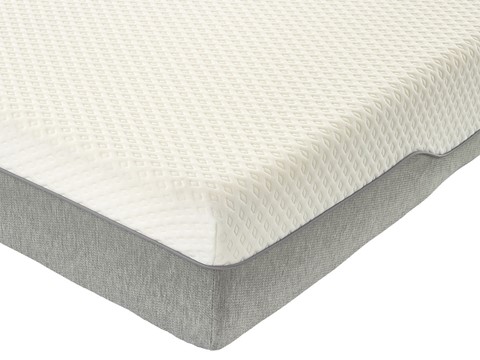The Best Sleeping Positions for Sacroiliac Joint Pain
Sacroiliac joint pain is a common condition that affects many people. The sacroiliac joint is located in the lower back and connects the sacrum to the pelvis. When this joint becomes inflamed or irritated, it can cause pain and discomfort. Sleeping in the wrong position can exacerbate this pain, making it difficult to get a good night's rest.
Fortunately, there are certain sleeping positions that can help alleviate sacroiliac joint pain.
The best sleeping position for sacroiliac joint pain is to sleep on your side with a pillow between your knees. This helps to keep your spine aligned and reduces pressure on the sacroiliac joint. It is important to use a firm pillow that will not collapse during the night.
Additionally, sleeping on a firm mattress can also help to reduce pain and discomfort.

Best Sleeping Positions for Sacroiliac Joint Pain
Side Sleeping
Side sleeping is particularly beneficial for those dealing with sacroiliac joint pain because it helps to evenly distribute body weight across the pelvis and lower back. This reduces localised stress on the SI joint, minimising pain and discomfort.
When you sleep on your side with a pillow between your knees, you maintain better alignment of your hips, pelvis, and spine. This alignment not only lessens the stress on the SI joint but also limits the shear and torque forces that can worsen the condition.
The result is a more restful sleep, with less waking due to pain, and an overall improvement in daytime comfort.
Back Sleeping
Back sleeping can be an advantageous position for those dealing with SI joint issues because it offers a more neutral alignment for the spine and pelvis. When you lie on your back, the weight of your body is more evenly distributed across your skeletal frame, which can minimise pressure points and stress on the SI joint. This is particularly true if you add a supportive pillow under your knees to maintain the natural curve of your lower back.
Another reason back sleeping can be effective for SI joint pain relief is that it allows the muscles surrounding the pelvis to relax. When these muscles are tense or imbalanced, they can contribute to SI joint dysfunction. The supine position often promotes muscular relaxation, which can mitigate the pulling forces on the SI joint, thereby reducing pain.
Of course, the effectiveness of back sleeping can vary from person to person, depending on the specific nature of their SI joint issues. But for those who find relief in the supine position, it can be a game-changer for achieving a restorative and pain-free night’s sleep.
Sleeping with a Pillow
The strategic use of a pillow can significantly enhance sleep quality for those with sacroiliac joint pain. When side sleeping, placing a pillow between the knees helps maintain hip and pelvic alignment, reducing stress on the SI joint. This minimises rotational forces that can exacerbate pain and discomfort.
For back sleepers, a pillow under the knees can elevate the legs slightly, preserving the natural curve of the lower back and distributing weight more evenly across the pelvis. This reduces undue pressure on the SI joint and promotes a more neutral spinal position.
The idea behind using a pillow is to fill gaps between your body and the mattress, thereby ensuring that the spine and pelvis are in a neutral position. Proper alignment can prevent or reduce muscle imbalances and tension, factors which often contribute to SI joint dysfunction.
By mitigating these issues, a pillow can play a crucial role in alleviating sacroiliac joint pain, leading to a more comfortable and restorative sleep.
Understanding Sacroiliac Joint Pain

Causes of Sacroiliac Joint Pain
Sacroiliac joint pain is caused by the inflammation or dysfunction of the sacroiliac joint, which is located in the lower back where the sacrum bone meets the iliac bones of the pelvis. The sacroiliac joint is responsible for transferring weight and forces between the upper body and the legs.
The following are some common causes of sacroiliac joint pain:
- Trauma or injury: A sudden impact or injury to the lower back can cause the sacroiliac joint to become inflamed or damaged.
- Arthritis: Osteoarthritis or rheumatoid arthritis can cause inflammation and degeneration of the sacroiliac joint.
- Pregnancy: The hormonal changes and increased weight during pregnancy can cause the sacroiliac joint to become unstable and painful.
- Ankylosing spondylitis: This is a type of arthritis that can cause inflammation and fusion of the sacroiliac joint.
Symptoms of Sacroiliac Joint Pain
The symptoms of sacroiliac joint pain can vary depending on the severity of the condition.
Some common symptoms include:
- Pain in the lower back, buttocks, hips, and thighs
- Stiffness and difficulty moving the lower back
- Pain that worsens with prolonged sitting or standing
- Pain that improves with lying down or changing positions
- Numbness or tingling in the legs
It is important to consult a healthcare professional if you are experiencing any of these symptoms to determine the underlying cause of your sacroiliac joint pain and to receive appropriate treatment.
The Importance of Sleep Position
Choosing the right sleep position is not just a matter of comfort; for people with sacroiliac joint pain, it can be a decisive factor in their overall well-being. The sacroiliac joint serves as a critical junction between your spine and pelvis, bearing the weight and facilitating the motion that comes with daily activities.
An incorrect sleeping position can misalign this intricate structure, placing additional stress on the joint and surrounding tissues. This not only exacerbates nighttime discomfort but can also set the stage for prolonged pain and even more serious complications over time.
A well-chosen sleep position, on the other hand, can provide substantial relief. Proper alignment of the spine and pelvis during sleep minimises the gravitational pull and torsional forces acting on the sacroiliac joint. This lessens the strain on the joint itself and helps to balance the surrounding muscular forces, contributing to reduced pain and potentially quicker healing.
Therefore, taking the time to identify and maintain a beneficial sleep position can be viewed as a form of non-invasive, self-administered treatment for sacroiliac joint pain. Whether it's side sleeping with a pillow between the knees or back sleeping with a pillow under the knees, the right sleep position can be a cornerstone in managing SI joint discomfort and improving your overall quality of life.
Positions to Avoid
When dealing with sacroiliac joint pain, some sleeping positions can exacerbate the condition and cause more discomfort.
Here are some common sleeping positions to avoid:
Stomach Sleeping
Stomach sleeping is generally not recommended for people with sacroiliac joint pain because it can lead to misalignment of the pelvis and spine. This position places undue stress on the SI joint, exacerbating existing discomfort. Additionally, stomach sleeping often requires you to turn your head to one side, which can create a chain of misalignment all the way up the spine, further contributing to pain and dysfunction.
Sleeping on the Back with Legs Straight
Sleeping on the back with legs straight can be problematic for those with sacroiliac joint pain. This position flattens the natural curve of the lower back, placing additional stress on the SI joint. The lack of support can lead to misalignment of the pelvis and spine, exacerbating SI joint discomfort. This makes it less ideal compared to other positions that offer better spinal alignment and relief from SI joint pain.
Sleeping in a Fetal Position
The fetal position, although comforting for some, can worsen sacroiliac joint pain for others. Curling up too tightly can lead to an exaggerated curvature of the spine and misalignment of the pelvis. This imbalanced position puts uneven pressure on the SI joint, exacerbating pain and discomfort. The overly flexed posture can also create muscle imbalances, further contributing to SI joint dysfunction and discomfort.
Sleeping on the Side with Legs Straight
This position may cause the pelvis to tilt, leading to misalignment and increased stress on the SI joint. Without the cushioning effect of a pillow between the knees, the top leg can also pull the pelvis downwards, exacerbating the strain on the sacroiliac joint and aggravating existing discomfort.
Sleeping on a Soft Mattress
The lack of firm support allows the pelvis to sink into the mattress, leading to misalignment of the spine and SI joint. This uneven distribution of weight and pressure can exacerbate SI joint discomfort and contribute to longer-term spinal issues. A firmer mattress is generally recommended for better support and alignment.
Additional Tips for Comfortable Sleep
In addition to finding the best sleeping position for sacroiliac joint pain, there are several other tips that can help improve the quality of sleep and reduce discomfort.
Use Supportive Pillows
Using supportive pillows can help maintain proper spinal alignment and reduce pressure on the sacroiliac joint. A pillow placed between the knees can help align the hips and reduce strain on the lower back. Placing a pillow under the abdomen can also help support the lower back and reduce discomfort.









